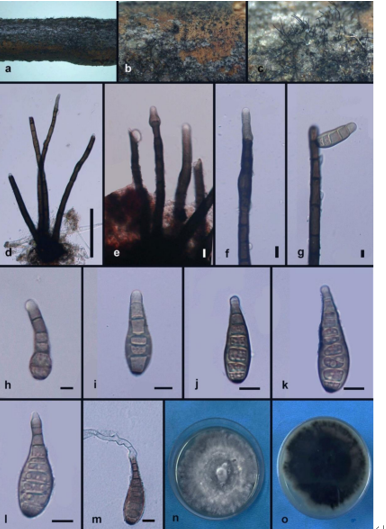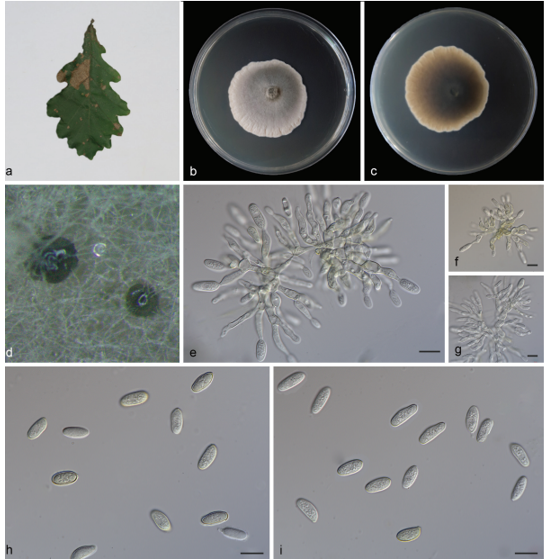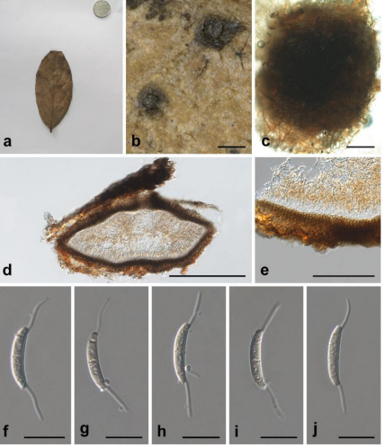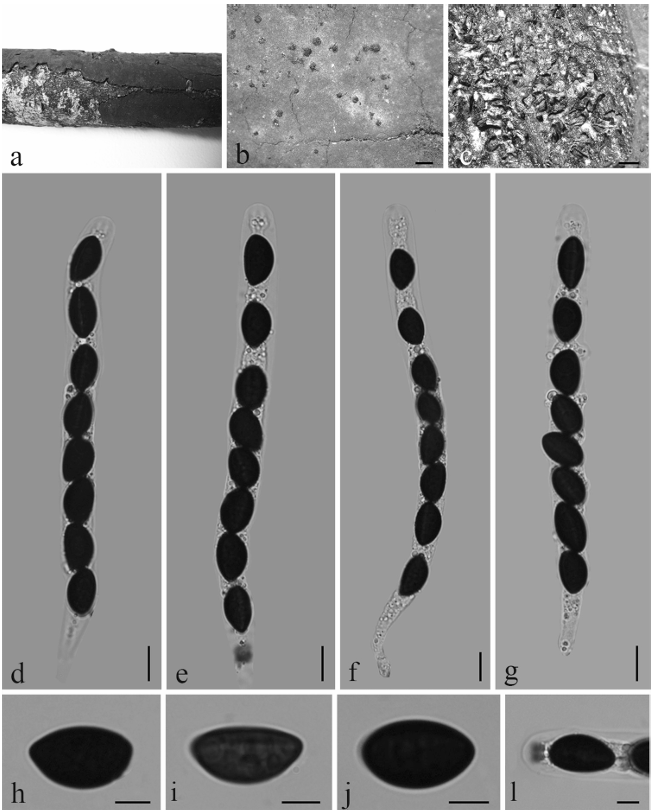Tenuitholiascus porinoides S.H. Jiang, Lücking & J.C. Wei 2020
Fungal Names: FN570580
Holotype: China: Hainan: Changjiang county, Bawangling National Nature Reserve, 19°07′07″N, 109°09′12″E, alt. 700 m, on living leaves, 4 Sept. 2017, S.H. Jiang HN20171851 (HMAS–L0139638 – holotype).
Morphological description
Thallus supracuticular, easily separated from the leaf surface, continuous, smooth, pale green, 3–12 mm diam, 30–52.5 μm thick. Algal partner: Phycopeltis, cells rectangular, 8–14 × 3–5 μm, composed of anastomosing filaments lying in one layer and forming regular radial plates or irregular nets. Ascomata perithecia, globose, scattered or clustered, exposed but covered by thin thallus layer up to the ostiole, central part wart-shaped, sometimes basal part broadly spreading to form horizontal plate, 0.25–0.5 mm diam and 80–150 μm high, greyish black. Involucrellum carbonized, black, 55– 125 μm thick. Exciple dense, prosoplectenchymatous, 10–12.5 μm thick, colourless to brown. Interascal filaments: unbranched or simply branched, thin. Asci bitunicate in structure, apex with a non-amyloid rounded, sometimes appearing almost unitunicate in some developmental stages, due to the gradually thinner inner walls (Fig. 1f; Fig. 2h, j), clavate to cylindrical, 75–90 × 10– 12.5 μm, I–, KI–, 8-spored. Ascospores fusiform, 3septate, colourless, 25–30 × 6–8 μm. Pycnidia common, wart-shaped, immersed to erumpent, 0.05–0.1 mm diam, black. Conidia (microconidia) fusiform, hyaline, nonseptate, 4–5 × 1.5–2 μm.
Habitat: On living leaves.
Distribution: In China.
GenBank Accession: ITS: MK211174
Notes:
Reference: Shu Hua Jiang1, David L. Hawksworth2,3,4, Robert Lücking5 et al.

Tenuitholiascus porinoides (HMAS–L0139638). a Thallus. b The Phycopeltis algal partner. c Perithecia in vertical section. d Ascus (HMAS–L0139639). e Ascus (HMAS–L0139640). f Ascus apex (HMAS–L0141346). g Ascus with iodine reaction (HMAS–L0139638). h Ascus with iodine reaction (HMAS–L0141348). i Ascospores (HMAS–L0139639). j Ascospores (HMAS–L0139638). Scale bars: a = 300 μm, b = 10 μm, c = 20 μm, d, i, j = 10 μm, e–h = 5 μm









